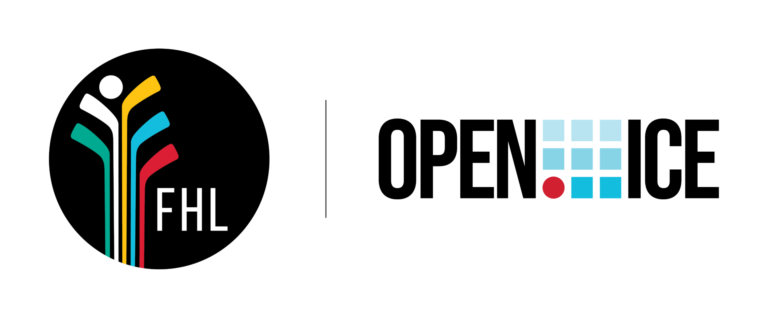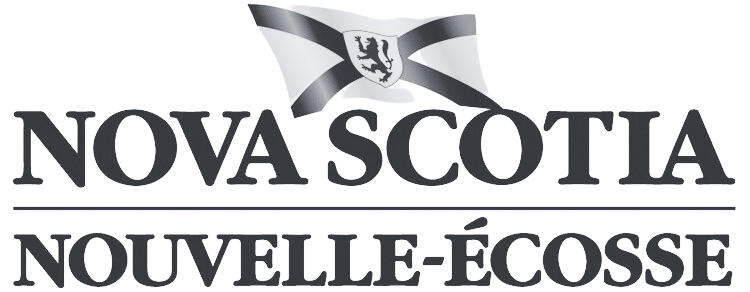Written by Denise Withers
Amy Walsh could sense the frustration among her colleagues. It felt like they'd been going in circles on this issue for years. As the Executive Director of Hockey Nova Scotia (HNS) and a former competitive hockey player, she knew how hard it was for girls (and other groups) to get access to ice time. Now, inspired by a report about the issue called Broken Ice, submitted by the Female Council of Hockey Nova Scotia, Walsh and the HNS Board were trying to figure out how to fix things.
"People were saying, 'It's the municipality's fault – they own it.' Or 'No, it's the minor hockey associations who own the issue.' 'No, it's the rink managers who own the issue.' And we recognized it was a big issue. But we were stuck. How do we begin to tackle it? It’s so complex and embedded in our systems that we just didn’t have the data and insights we needed to really dig into the root cause."
They weren't alone in their struggle.
Communities across the country faced the same challenge – they simply didn’t have enough ice time for those who wanted to play. So they did what they've always done – give ice to returning leagues and groups first, what's known as 'grandfathering'.
That left hockey lovers like Simone Laski out in the cold.
When Simone decided she wanted to try hockey 2 years ago, she was considered a "latecomer" to the game at the ripe old age of 10, and her mom Amy couldn't find a learn-to-play program for her. So Laski started one for tweens in her area in Toronto and recruited 40 girls who wanted to play. But when she went to get prime ice time, the city told her she was out of luck.
"Everybody talks about how hard it is to get teen girls engaged in sports. So here I've built this program that clearly works, where we have a waiting list. But the city only gives 6% of ice for community hockey to girls. I had to sign this declaration that my program would abide by the human rights code, and yet their own policy doesn't comply with that code."
"Those people who have always gotten the prime slice of the pie will always get the prime slice of the pie and everybody else gets crumbs."
"It's so bad because the girls shouldn't feel inferior or secondary to the boys or any other group. They shouldn't feel like they're asking permission of the boys just to get a little bit of ice time."
Everyone in the hockey world knew something needed to change. But it was such a complex issue, that they didn't know where to start.
Fast forward to Spring 2023 in the Future of Hockey Lab.
Amy Walsh has left Hockey Nova Scotia to lead the lab full-time as the CEO. Female hockey champion Christina Lamey has just won a major victory by raising funds and awareness to open Canada's first dedicated home rink for girls. They meet with innovation expert Sonia Sennik from the Creative Destruction Lab and the FHL Board of Mentors. After delving into the research and reflecting on the Lab's work over the past year, they pinpointed equitable access to ice time as the cornerstone issue limiting the game's expansion. Once addressed, this could set off a domino effect, paving the way to resolve other related challenges..
"I came to the Future of Hockey Lab with the ice access issue because, after years and years of doing this, I feel like that's foundational to almost everything else you want to do”, Lamey explains. "If female hockey associations can't get good ice time and offer a product that's as good as existing minor hockey programs, people won't choose it and then they'll stay away from hockey altogether. For example, the City of St. John has an ice equity access policy and they have a thriving female hockey association, whereas Moncton does not and does not have a female hockey association."
In other words, it doesn't matter how many sponsors, volunteers, fans, players or coaches you have. It doesn't matter if you're 6 or 60, disabled or pro, white or brown, queer or straight, religious or atheist, short or tall. If you can't get on the ice, you can't play the game. And overall interest in the game will continue to decline. As Walsh says, "Figuring out the ice equity issue for us, is really about opening access to grow the game for all."
As the FHL team dug deeper, they discovered that, aside from all the anecdotes about how hard it is to get ice, there was very little data available about who's actually using the ice at Canadian rinks. Without this data and the insights that come with it, they couldn’t figure out a solution.
"So a light bulb went off one evening, when we realized that this is totally a data issue," Walsh shares. "We do not have a universal system that tracks ice, how it's used or who it's used by – then makes that information transparent. So if we're really going to tackle the issue of inequity, we first need to see it. We need to see the data first. Then we can start using that as a lever for change."
That's why the FHL is spending the next year working with others in the hockey system, like rink and league managers, to find a way to collect those data, starting in Cape Breton, Nova Scotia. To do that, they'll have an advisory board, as well as a community group that will inform how the project proceeds. Plus financial support from Hockey Nova Scotia and the Province.
They'll also experiment with technology that will pull data in from rink booking systems and make them transparent and accessible through some kind of dashboard. This is important not just from a project perspective, but also because most rinks receive some form of public funding. As Walsh explains, “These rinks are a public resource and tax-payers are entitled to know who’s using them.”

After completing the development of the initial system in Nova Scotia in the fall of 2024, the FHL team hopes to scale the data collection system across the country.
Once they have data that tell them who's getting access to ice (and who isn't), then they can start to work with partners to develop solutions. That may include new equity policies, like the one Christina inspired in Halifax, accountability frameworks to ensure policies are followed, or even new approaches to practicing and playing, like using synthetic ice and building new eco-friendly rink infrastructure.
As this work unfolds, the team knows that the key to success will be to maintain an abundance mindset and philosophy.
"This isn't about taking ice away from one group to give to another,” Walsh emphasizes. “Our goal is to find a way to ensure that everyone who wants to play can. So we're going to get all the data we can and be innovative around how we can use ice time more effectively. For example, scheduling efficiencies could be huge. I think maximizing infrastructure, would be huge. I think being really innovative about finding a way for groups who have the financial means to book a lot of ice to donate ice to others could open things up significantly."
While the vision is to ensure that people like Simone Laski, the kids from Halifax's Ummah Mosque and Community Centre and West Hants’ Black Hockey program can all access ice time in the future, Walsh and the FHL team know the work won't be easy.
"We're not saying that we've got it all solved by any means. This is going to be extremely challenging. But it is so core to the future of the game. If you can't access the field of play, you can't play. And I think because it is multilayered and because it's complex and it's deep-rooted in historical grandfathered ice and underground ice markets, no one has wanted to tackle it, and everyone has pushed it onto someone else's issue. So I'm just excited that we're taking this on and we're focusing on this particular angle that I don't think has been tried before."
As a long-time advocate for equity in the sport, Christina Lamey knows how hard it is to make system change, to break down all the barriers that have made it impossible to create sustainable development pathways for girls in hockey. This project gives her hope for the future.
"I would never have said back 20 years ago that I was going to try to reshape girls' and women's hockey in Nova Scotia and overall in Canada. But here I am and I'm so glad because this is a very worthwhile project. It has so many larger implications about everything, about systems that just are stacked against girls' hockey and the change we want to see. You can't have structural change in the game, or at organizations like Hockey Canada if girls and other groups can't get on the ice."
This work started with our first cohort in 2021. Learn more here.



